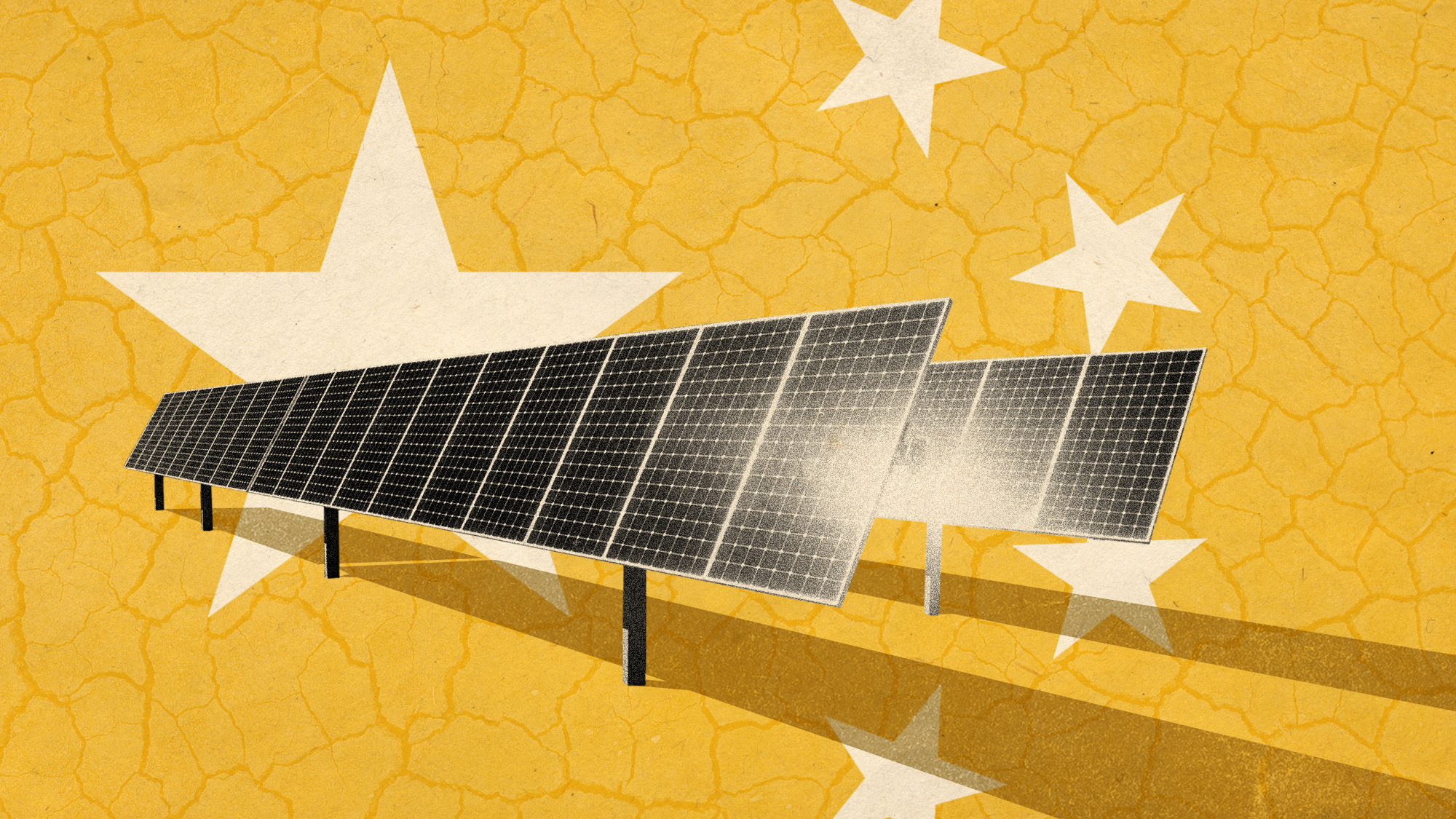China's winning battle against desertification
Beijing is using solar power to lead the fight as climate change intensifies the threat

China is "using the sun to fight the sand" in the latest chapter of its ongoing battle against "desertification".
An "audacious" project in Ordos, Inner Mongolia, will see the construction of 100 gigawatts of solar panels – more than three times as much capacity as the US is currently building – along a stretch of land 250 miles long and three miles wide, said Semafor.
The World Economic Forum defines "desertification" as "a type of land degradation in which an already relatively dry land area becomes increasingly arid, degrading productive soil and losing its bodies of water, biodiversity and vegetation cover".
The Week
Escape your echo chamber. Get the facts behind the news, plus analysis from multiple perspectives.

Sign up for The Week's Free Newsletters
From our morning news briefing to a weekly Good News Newsletter, get the best of The Week delivered directly to your inbox.
From our morning news briefing to a weekly Good News Newsletter, get the best of The Week delivered directly to your inbox.
As much as 75% of the world's soils "are already degraded", said Chinese state news agency Xinhua. China is one of the most affected nations, but "robust ecological initiatives" over the past two decades have led to a "significant decline in the frequency and intensity of spring sandstorms" associated with the phenomenon.
'Choking winds'
People in northern China are "no strangers" to "choking, dust-laden winds" and "seeing the sun reduced to a hazy orange orb hanging obscured in a sand-tinted sky" during annual spring sandstorms, said Nikkei Asia.
The sandstorms mainly originate from the Gobi Desert area of southern Mongolia and along the Sino-Mongolian border, said the Chinese Academy of Engineering. The deluge of sand transforms fertile lands into deserts, which "disrupts rainfall patterns" and "exacerbates extreme weather events", further driving climate change, said Xinhua.
Although China's National Forestry and Grassland Administration said the total number of spring sandstorms had almost halved between 1981 and 2010, from an average of 17 to 9.2, they remain a serious challenge.
A free daily email with the biggest news stories of the day – and the best features from TheWeek.com
Desertification is estimated to cost the economy more than 54 billion yuan (£5.74 billion) every year, and around 400 million people – almost 30% of the nation's 1.4 billion people – are "directly or indirectly affected" by the phenomenon.
Last year saw a "frequent choking haze" reminiscent of the "terrible spring of 2000", when a vast region in northern China was hit by repeated sandstorms and prolonged dust-laden winds, "the likes that had not been seen in half a century". This only intensified China's decades-long efforts to tackle the problem.
'High stakes'
China’s deserts make up more than 25% of its total land mass, amounting to almost as much territory as all of India, said Semafor. Since the 1950s Beijing has been "seeking to mitigate the severity and impact" of dust storms, and "over the longer term" to prevent "desert encroachment" on urban areas or fertile, arable land.
China's desertification has been "primarily caused by human activities, such as overgrazing, excessive logging and excavation, overexploitation, excessive land reclamation, and the misuse of water resources", said Nikkei Asia.
But it has made "remarkable strides" in tackling the issue, said Xinhua, beginning in 1978 with the launch of the "Great Green Wall of China". Expected to continue until 2050, the "biggest tree-planting project in human history" will ultimately have created "88 million acres of forests in a wall stretching about 3,000 miles and as wide as 900 miles in some places", said Earth.org.
Since the 18th National Congress of the Communist Party of China in 2012, the country has "intensified support" for key projects that have led to 53% of the treatable desertified areas now being classified as under effective control to prevent further degradation.
This progress is important because the wider "stakes are high", said Semafor. With the world aiming to triple its renewable power capacity this decade, a leading nation being able to deploy solar power at mass scale in the desert "would have huge implications globally".
The World Atlas of Desertification has warned that 75% of the world's soils are already degraded, affecting 3.2 billion people in all. According to forecasts from the United Nations Educational, Scientific and Cultural Organization, 90% of the planet's land surface is at risk of degradation by 2050.
Chas Newkey-Burden has been part of The Week Digital team for more than a decade and a journalist for 25 years, starting out on the irreverent football weekly 90 Minutes, before moving to lifestyle magazines Loaded and Attitude. He was a columnist for The Big Issue and landed a world exclusive with David Beckham that became the weekly magazine’s bestselling issue. He now writes regularly for The Guardian, The Telegraph, The Independent, Metro, FourFourTwo and the i new site. He is also the author of a number of non-fiction books.
-
 Crest falling: Mount Rainier and 4 other mountains are losing height
Crest falling: Mount Rainier and 4 other mountains are losing heightUnder the radar Its peak elevation is approximately 20 feet lower than it once was
-
 Death toll from Southeast Asia storms tops 1,000
Death toll from Southeast Asia storms tops 1,000speed read Catastrophic floods and landslides have struck Sri Lanka, Indonesia, Thailand and Malaysia
-
 Can for-profit geoengineering put a pause on climate change?
Can for-profit geoengineering put a pause on climate change?In the Spotlight Stardust Solutions wants to dim the sun. Scientists are worried.
-
 How will climate change affect the UK?
How will climate change affect the UK?The Explainer Met Office projections show the UK getting substantially warmer and wetter – with more extreme weather events
-
 Can the UK do more on climate change?
Can the UK do more on climate change?Today's Big Question Labour has shown leadership in the face of fraying international consensus, but must show the public their green mission is ‘a net benefit, not a net cost’
-
 Did Cop30 fulfil its promise to Indigenous Brazilians?
Did Cop30 fulfil its promise to Indigenous Brazilians?Today’s Big Question Brazilian president approves 10 new protected territories, following ‘unprecedented’ Indigenous presence at conference, both as delegates and protesters
-
 Can the world adapt to climate change?
Can the world adapt to climate change?Today's Big Question As the world gets hotter, COP30 leaders consider resilience efforts
-
 Taps could run dry in drought-stricken Tehran
Taps could run dry in drought-stricken TehranUnder the Radar President warns that unless rationing eases water crisis, citizens may have to evacuate the capital

